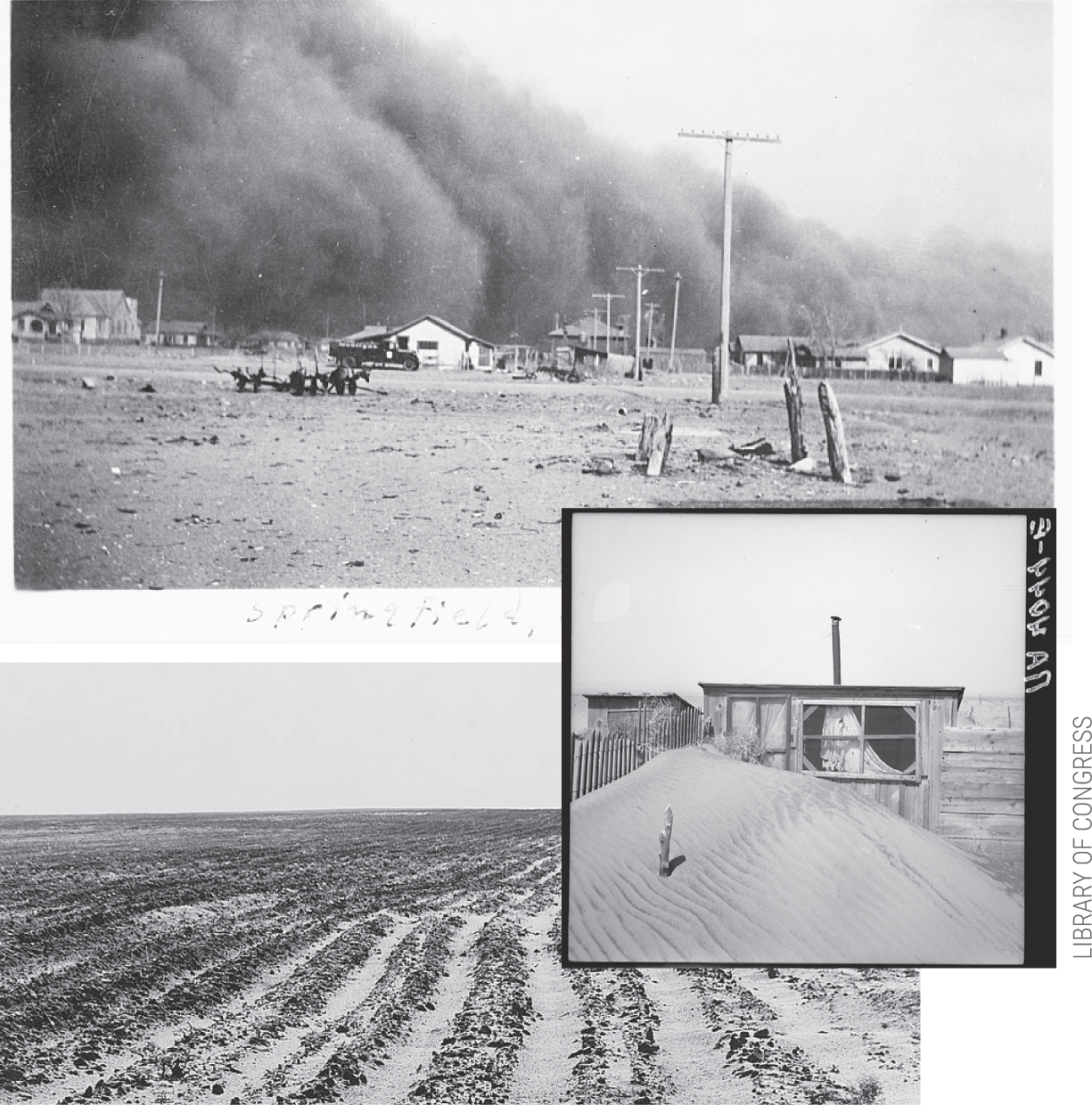Right to the Source
Wind Erosion and the Dust Bowl
The Great Depression began with the crash of the stock market in 1929 and intensified with the devastating conditions of the Dust Bowl. Across the Great Plains—Texas, New Mexico, Colorado, Nebraska, Kansas, and Oklahoma—severe water shortages and harsh farming techniques sparked an environmental disaster, turning soil into dust and leaving unmanaged farmlands susceptible to wind erosion.
The entire region, and eventually the country, felt the effects of the dust storms. “Black Blizzards” barreled through towns producing clouds of dust, reducing visibility, and turning day into night. Dust loomed in the sky for days, often leaving residents with respiratory illnesses. The catastrophic conditions of the Dust Bowl drove residents to leave home and migrate to other states where environmental and economic conditions were better.
The Farm Security Administration (FSA) was a Depression-era agency of the federal government that provided support to poor rural farmers. The FSA supported a small photography unit that captured thousands of images of the Dust Bowl, including the three photographs featured in this article that were taken between 1936–38 in Oklahoma, Colorado, and Texas.
Share the three images with students and invite them to observe the effects of erosion. Challenge them to consider how the availability of natural resources changed the environment and influenced human activity. Encourage students to write their reasoning using justification from the photographs displayed.
The iconic images of the FSA collection may help students visualize and explain the inter-connectedness of nature, the environment, and human life. The lack of rainfall and poor farming techniques led to damaged crops and forgotten farmlands. This combination initiated dust storms via wind erosion, and ultimately forced farmers to pioneer new farming approaches. Lessons learned from the Dust Bowl forged new mindsets about farming and the importance of preserving natural lands to help generate a better and more sustainable environment.
About the Source
The Farm Security Administration (FSA) hired photographers to document American life during 1935–1944. Notable FSA photographers included Doretha Lange, Walker Evans, Russell Lee, Arthur Rothstein, Ben Shahn, Jack Delano, Marion Post Wolcott, Gordon Parks, John Vachon, and Carl Mydans. Their photographs provide a glimpse of life as well as environmental conditions during the Great Depression. This collection of more than 170,000 photographs is available online from the Library of Congress at: https://www.loc.gov/collections/fsa-owi-black-and-white-negatives/about-this-collection/. The images included here can be accessed directly via the following links: https://www.loc.gov/item/2017760329/ (“Sand piled up in front of outhouse on farm. Cimarron County, Oklahoma”), https://www.loc.gov/item/2017759525/ (“Dust storm. Baca County, Colorado”), and https://www.loc.gov/item/2017770617/ (“Furrowing against the wind to check the drift of sand. Dust Bowl, north of Dalhart, Texas”).
Amara Alexander (aalexander@loc.gov) is the 2019–2020 Albert Einstein Distinguished Educator Fellow at the Library of Congress.
Climate Change Teacher Preparation High School



